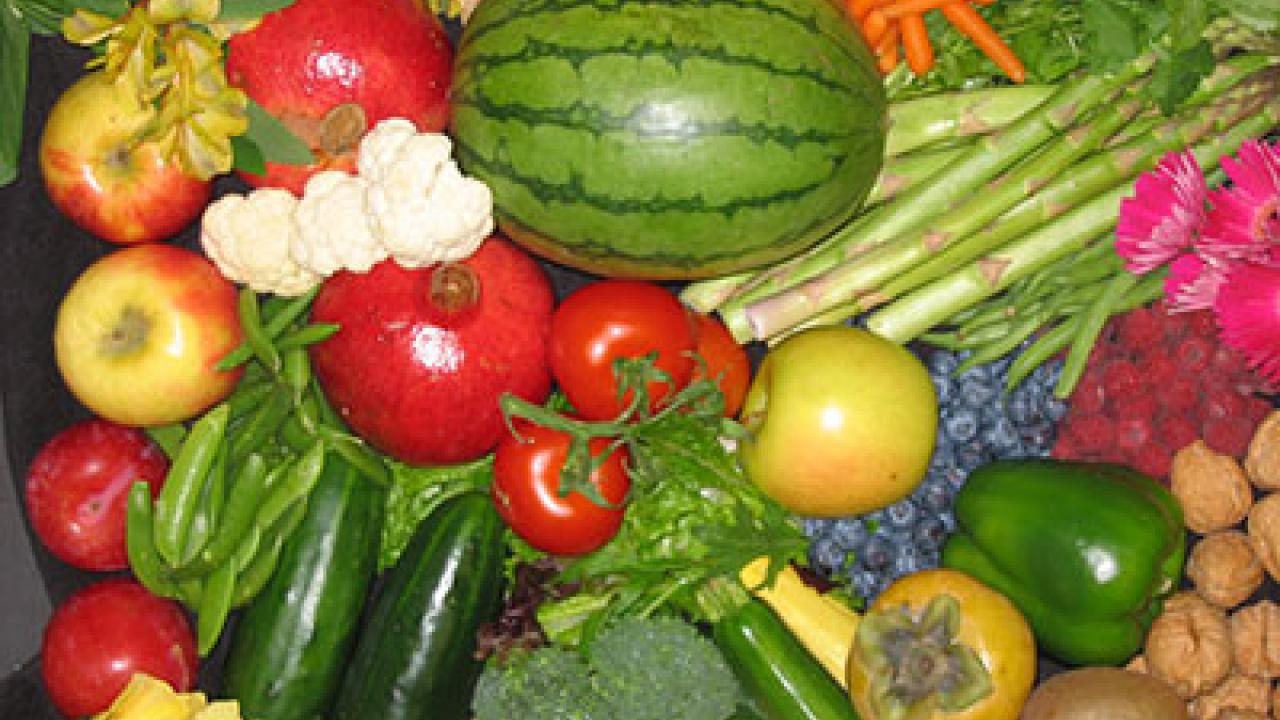
Postharvest Physiology: Understanding the Science Behind Fruit and Vegetable Quality Maintenance
Postharvest physiology is a branch of science that focuses on understanding the changes that occur in fruits and vegetables after they are harvested from plants. It plays a crucial role in maintaining the quality and extending the shelf life of these perishable commodities. By gaining a deeper understanding of postharvest physiology, growers and consumers can make informed decisions to ensure the freshness, flavor, and nutritional value of their produce.
Importance of Postharvest Quality Maintenance
Maintaining postharvest quality is essential for both growers and consumers. For growers, it directly impacts their profitability, as the value of their produce is determined by its quality. High-quality fruits and vegetables fetch better prices in the market, leading to increased revenue.
On the other hand, consumers benefit from postharvest quality maintenance by having access to fresh and nutritious produce that is visually appealing and flavorful.
Factors Affecting Postharvest Quality – Climate, Storage Conditions, and Handling Practices
Several factors influence the postharvest quality of fruits and vegetables. Climate plays a significant role, as temperature, humidity, and light conditions can either accelerate or slow down the physiological changes that occur during storage. Storage conditions, such as temperature, humidity, and ethylene levels, also play a crucial role in maintaining quality. Improper storage conditions can lead to accelerated ripening, increased decay, and loss of nutritional value.
Another critical factor is the handling practices during harvesting, transportation, and storage. Rough handling can cause mechanical damage to the produce, leading to bruising, cuts, and abrasions. These injuries provide entry points for pathogens, accelerating decay. Proper handling techniques, such as gentle harvesting, careful packing, and avoiding excessive pressure, can minimize damage and maintain postharvest quality.
Understanding the Physiology of Fruits and Vegetables
To manage postharvest quality effectively, it is essential to understand the physiological processes that occur in fruits and vegetables. Fruits undergo various changes after harvest, including respiration, ethylene production, and changes in color, texture, and flavor. Respiration is the process by which fruits and vegetables convert carbohydrates into energy, releasing carbon dioxide and heat. Understanding the respiration rates of different fruits helps determine the optimum storage conditions to slow down the aging process.
Ethylene is a natural plant hormone that influences the ripening process. Some fruits, like bananas and apples, produce higher levels of ethylene, which can accelerate the ripening of other ethylene-sensitive fruits. By managing ethylene levels during storage, it is possible to control the ripening process and prolong the shelf life of fruits and vegetables.
Changes in color, texture, and flavor are also important indicators of postharvest quality. Color changes can be due to the breakdown of pigments, while changes in texture and flavor can result from enzymatic activities. By understanding the specific physiological changes that occur in each type of fruit or vegetable, appropriate postharvest management techniques can be implemented.
Techniques for Maintaining Postharvest Quality
Several techniques are employed to maintain postharvest quality and extend the shelf life of fruits and vegetables. One of the most common techniques is cold storage, which slows down the metabolic rate of produce, delaying ripening and senescence. Controlled atmospheres, where the composition of gases is modified, can also be used to regulate the respiration rate and control ethylene levels.
Another technique is the use of postharvest treatments such as washing, waxing, and the application of antimicrobial agents. Washing helps remove dirt and surface contaminants, while waxing creates a protective layer that reduces moisture loss and maintains the appearance of the produce. Antimicrobial agents can help control the growth of pathogens, reducing decay and extending shelf life.
Furthermore, advancements in packaging technology have revolutionized postharvest management. Modified atmosphere packaging (MAP) involves packaging produce in a modified gas environment to slow down ripening and extend shelf life. Vacuum packaging removes oxygen, reducing the growth of aerobic microorganisms and maintaining product quality.
Postharvest Management in the Garden – Tips for Home Growers
Postharvest management begins right in your garden. By implementing proper practices, home growers can maximize the quality and shelf life of their fruits and vegetables. Harvesting at the right stage of maturity is crucial, as fruits and vegetables harvested too early or too late may not reach their full flavor potential. It is important to handle produce gently to avoid bruising and damage.
Storage conditions in the garden should also be considered. Storing produce in a cool and dry place can help prolong its shelf life. Some fruits and vegetables, like tomatoes and peppers, are best stored at room temperature, while others, like leafy greens, benefit from refrigeration.
Additionally, regular inspection and removal of damaged or overripe produce can prevent the spread of decay to other fruits and vegetables. By implementing these practices, home growers can enjoy the full flavor and nutritional benefits of their harvest for an extended period.
Postharvest Management in Commercial Agriculture
In commercial agriculture, postharvest management is critical to ensure that produce reaches consumers in optimal condition. Large-scale operations employ various techniques and technologies to maintain postharvest quality. Harvesting is done using mechanized equipment to minimize damage, and produce is quickly transported to packing and processing facilities.
Commercial growers often invest in refrigerated storage facilities to maintain the freshness and quality of their produce. Temperature and humidity control systems are used to create ideal conditions for each type of fruit or vegetable. Ethylene control systems are also employed to manage ripening and prevent premature decay.
Moreover, commercial growers rely on postharvest treatments and packaging technologies to extend the shelf life of their produce. Washing, sorting, and grading systems ensure that only high-quality fruits and vegetables are packed for distribution. These advanced postharvest management practices enable commercial agriculture to meet consumers’ demands for fresh, nutritious, and visually appealing produce.
Postharvest Management for Specific Crops – Fruits, Vegetables, Pot
Postharvest management techniques can vary depending on the type of crop. Fruits, such as apples, oranges, and berries, have specific requirements to maintain quality. Cold storage and controlled atmosphere storage are commonly used for fruits, while techniques like waxing and irradiation can also be employed for specific purposes. Additionally, individuals looking to buy cannabis seeds online can explore various options for purchasing high-quality seeds to start their own cultivation.
Vegetables, like leafy greens, root vegetables, and cruciferous vegetables, require different postharvest management techniques. Some vegetables benefit from refrigeration, while others are best stored at room temperature. Proper washing and trimming techniques help maintain quality, and packaging methods like MAP and vacuum packaging can be utilized. For those interested in growing their own cannabis, it’s essential to obtain high-quality seeds, and buying cannabis seeds online can provide access to a wide range of strains suitable for different cultivation needs.
In recent years, there has been growing interest in the postharvest management of cannabis, especially for medicinal and recreational purposes. Proper drying and curing techniques are crucial for preserving the potency and quality of cannabis buds. Temperature and humidity control during storage are essential to prevent mold growth and degradation of cannabinoids.
The Role of Seed Quality in Postharvest Management
Seed quality plays a vital role in postharvest management. High-quality seeds give rise to healthy and vigorous plants that are more resistant to postharvest stresses. Growers should choose seeds from reputable sources to ensure genetic purity and uniformity. Seeds that have been properly stored and handled are more likely to germinate and produce robust plants with better postharvest performance.
Additionally, seed treatments such as priming and coating can enhance seed quality and improve postharvest performance. Priming involves exposing seeds to controlled hydration and dehydration cycles, which can enhance germination, seedling emergence, and overall plant growth. Coating seeds with protective substances can improve their resistance to diseases, pests, and environmental stresses.
Conclusion
Understanding the science behind postharvest physiology is crucial for maintaining the quality and extending the shelf life of fruits and vegetables. Factors such as climate, storage conditions, and handling practices directly influence postharvest quality. By implementing appropriate techniques and technologies, growers can ensure that their produce reaches consumers in optimal condition.
Whether you are a home grower or a commercial farmer, postharvest management plays a vital role in maximizing the freshness, flavor, and nutritional value of your fruits and vegetables. By following proper practices and utilizing advanced technologies, you can enjoy the full benefits of your harvest and contribute to a sustainable and resilient food system.
So, whether you are growing fruits, vegetables, or even cannabis, remember the importance of postharvest management and choose high-quality seeds from reputable sources. With proper knowledge and techniques, you can ensure the longevity and quality of your produce, providing yourself and others with nutritious and delicious options.
For more interesting articles , stay in touch with undiscoveredgyrl



